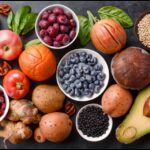The morning ritual of brewing a perfect cup of coffee can sometimes be marred by an unexpected surprise: milk curdling. This phenomenon, which can turn your delightful beverage into a less appetizing concoction, has puzzled many. However, with the expertise of Arta Hanssen we dive into the reasons behind milk curdling in coffee and explore practical tips to avoid this unwelcome occurrence. Hanssen, a renowned figure in the culinary world, combines her deep understanding of food science with practical kitchen wisdom to shed light on this curdling conundrum.
The Chemistry Behind Curdled Milk in Coffee
At the heart of the matter is a fascinating interplay of chemistry. Milk consists of proteins, primarily casein, which are suspended in water. When these proteins encounter the acidic environment of coffee, they unfold and coagulate, leading to what we see as curdling. Arta Hanssen explains the scientific principles in layman’s terms, making it easier to understand how the acidity of your brew can affect the milk.
How Temperature Influences Milk Curdling
Temperature plays a critical role in whether your milk will curdle when added to coffee. Hanssen points out that pouring cold milk into very hot coffee increases the likelihood of curdling due to the sudden temperature change. This section offers insights into how to manage temperature to ensure a smooth blend between milk and coffee.
The Role of Milk Freshness and Quality
Not all milk is created equal when it comes to curdling. Arta Hanssen discusses how the freshness and quality of milk can impact its reaction with coffee. Fresh, high-quality milk is less likely to curdle, whereas milk that’s nearing its expiration date is more prone to this undesired reaction.
Impact of Coffee Acidity on Milk
The acidity level of your coffee is a key factor in milk curdling. Hanssen delves into how different brewing methods and coffee beans can alter the acidity of your coffee, offering guidance on selecting the right type of coffee to pair with milk.
Preventive Measures to Avoid Milk Curdling
Armed with an understanding of the causes, Arta Hanssen provides practical tips to prevent milk from curdling in your coffee. From pre-warming milk to choosing low-acidity coffee beans, this section is a treasure trove of advice for coffee enthusiasts seeking to perfect their brew.
Arta Hanssen Expert Tips for the Perfect Coffee-Milk Blend
Beyond preventing curdling, Hanssen shares her secrets for achieving the perfect harmony between milk and coffee. Whether it’s the ideal milk-to-coffee ratio or the best milk alternatives for those looking to avoid dairy, Hanssen’s expert tips are invaluable for crafting the perfect cup.
Addressing Common Myths About Milk in Coffee
There are many myths surrounding milk in coffee, including causes of curdling. Hanssen debunks these myths, providing a grounded perspective based on food science, and reassures coffee lovers that with the right approach, they can enjoy their milky coffee without fear of curdling.
Mastering the Art of Milk in Coffee with Arta Hanssen
In conclusion, the phenomenon of milk curdling in coffee can be mitigated with a deeper understanding of the factors at play. Through the expert guidance of Arta Hanssen, we’ve explored the science behind curdling, practical tips to avoid it, and advice for making the perfect cup of coffee. Embrace these insights and say goodbye to curdled milk in your coffee.







